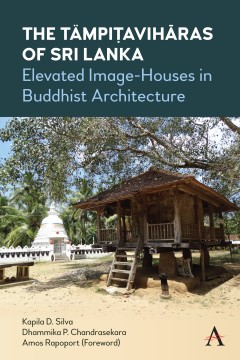
Source:Anthempress
The Ṭämpiṭavihāras of Sri Lanka focuses on one distinctive Buddhist architectural practice from pre-modern Sri Lanka – the construction of Buddha image-houses on elevated wooden platforms supported by stone pillars.
The Ṭämpiṭavihāras of Sri Lanka focuses on one distinctive Buddhist architectural practice from pre-modern Sri Lanka – the construction of Buddha image-houses on elevated wooden platforms supported by stone pillars. As a centre of Buddhism, Sri Lanka has a rich tradition of erecting Buddha image-houses, the origin of which dates to the fifth century. Yet, the ṭämpiṭavihāra tradition only existed from the thirteenth to the nineteenth centuries. The ṭämpiṭavihāra is an exceptional type of image-house, not only for its specific timeframe and unique construction technology, but also for its complex architectural conception of the Buddhist worldview and soteriology. Except for this period of Sri Lankan history, this architectural exemplar does not exist in anytime or anywhere in the entire Buddhist world. This book examines the significant aspects of ṭämpiṭavihāra architecture and documents some of the distinctive examples with an analysis of their architectural design and symbolic content.
Richly illustrated with photographs and drawings, the book is organized into two parts. The first part examines the significant historical, cultural, and architectural aspects of ṭämpiṭavihāras in depth. The second part documents fifty of the distinctive examples of ṭämpiṭavihāras in the country with an analysis of their architectural designs and symbolic content. Each example is illustrated with architectural drawings of its plans, elevations, and sections along with photographs. The book also includes a list of over 200 extant tämpiṭavihāras in the country. This book is the very first comprehensive examination of the subject of tämpiṭavihāras published in any language and made available for a global audience. It narrates the story of ṭämpiṭavihāras from a multidimensional perspective that involves architecture, anthropology, archaeology, art history, geography, history, sociology, and theology. Consequently, it appeals to a vast array of enthusiasts of these disciplines in addition to scholars in Asian studies, South Asian studies, Sri Lankan studies, and Buddhist studies.






